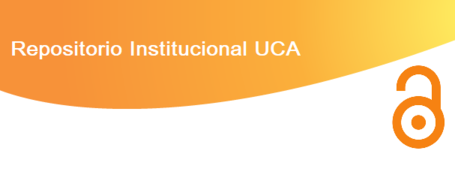György Ligeti. Entre tradición y renovación
Palabras clave:
Modelos históricos, Vanguardia, Tradición, Post serialismoResumen
Este trabajo busca bucear en las tensiones que se produjeron entre tradición y renovación en la época heroica de la vanguardia de la segunda posguerra, y en la primera generación de los post serialistas. En particular centrado en la figura de György
Ligeti, un compositor en el cual se refleja especialmente esta tensión. La hipótesis que se intenta demostrar es que, si bien en sus declaraciones los jóvenes revolucionarios, en una postura mayormente ideológica, proclamaban la renovación total del lenguaje musical, en el fondo no lograron despegarse completamente de la tradición. En el caso de Ligeti, a pesar de la aparente vanguardia de su música perteneciente a su segundo período compositivo, este compositor mantuvo en su producción fuertes lazos con la tradición. Los modelos históricos de creación musical que parecían haber sido dejados de lado en este período, en verdad se mantuvieron, subterráneos, pero muy vigentes.
Descargas
Citas
Adorno, Th. W. (2006). Escritos Musicales I – III. Obra Completa. Madrid. AKAL.
Boulez, P. (1963). Penser la musique aujourd’hui. Paris. Gallimard.
Boulez, P. (1989). Jalons (pour une décenie). Paris. Christian Bourgeois Éditeur.
Boulez, P. (2012) Conferencia de agradecimiento al Premio Fundación BBVA Fronteras del conocimiento https://www.youtube.com/watch?v=iDFmQ5RUTVM&t=77s (Última visita, 23/07/21).
Cambouropoulos, E. y Tsougras, C. (2009). Auditory Streams in Ligeti's Continuum: A Theoretical and Perceptual Approach. Journal of interdisciplinary music studies. Turkey-Online edition http://www.musicstudies.org
Dahlhaus, C. (2004). Essais sur la Nouvelle Musique. Genève. Éditions Contrechamps.
Edwards, P. (2015). Convergences and discord in the correspondence between Ligeti and Adorno. Music & Letters, Vol. 96 No. 2
Feldman, M. (1998). Écrits et paroles. Paris. L’Harmattan.
Fessel, P. (2007). Forma y concreción textural en Apparitions (1958/59) de György Ligeti. Revista del Instituto Superior de Música - Núm. 11.
Iddon, M. (2013). New Music at Darmstadt. Nono, Stockhausen, Cage, and Boulez. New York. Cambridge University Press
Kagel, M. 1(975). Tamtam-Dialoge und Monologe zur Musik. München. R.Piper & Co. Verlag.
Lachenmann, H. (1996). Musik als existentielle Erfahrung. Wiesbaden. Breitkopf & Härtel.
Levy, B. R. (2017). Metamorphosis in Music: The Compositions of György Ligeti in the 1950s and 1960s. Oxford. Oxford University Press.
Ligeti, G. (2007). György Ligeti Gesammelte Schriften. Bände I und II. Lichtenfeld, Monika (editora) Mainz. Schott Music GmbH & Co. KG – Paul Sacher Stiftung (Basel).
Michel, P. (1985). György Ligeti Compositeur d’aujourd’hui. Paris. Éditions Minerve.
Nordwall, O. (1971). György Ligeti Eine Monographie. Mainz. B. Schott’s Söhne.
Nordwall, O. (2001). Ligeti’s Harpsichord. Contemporary Music Review. Vol. 20, Part 1, pp. 71-78.
Nono, L. (2007). Luigi Nono – Écrits. Genève. Éditions Contrechamps.
Petersen, P. (2008). Jede zeitliche Folge von Tönen, Klängen, musikalischen Gestalten« hat Rhythmus.Über die Rhythmik in Ligetis Cembalostück Continuum. Internetveröffentlichung auf www.saitenspiel.org
Piencikowski, R. (1987). Les points sur les i – Le Concerto de Chambre de Ligeti.
Harmoniques – Musiques, Identités. IRCAM. Paris. Christian Bourgeois Éditeur.
Stockhausen, K. (1963) Texte zur elektronischen und instrumentalen Musik. Band 1. Köln. Verlag DuMont Schauberg.
Internationale Ferienkurse für NeueMusik. (1973). Mainz. B. Schott’s Söhne.
Varnai, P., Hausler, J., Samuel, C. y Ligeti, G. (1984). Ligeti in Conversation with Peter Varnai, Josef Hausler, Claude Samuel and Himself. Boston. Da Capo Press.
Boulez, P. (1984). Puntos de referencia. Barcelona. Editorial Gedisa.
Descargas
Publicado
Cómo citar
Número
Sección
Licencia
Derechos de autor 2022 Juan Ortiz de Zárate

Esta obra está bajo una licencia internacional Creative Commons Atribución-NoComercial-CompartirIgual 4.0.






